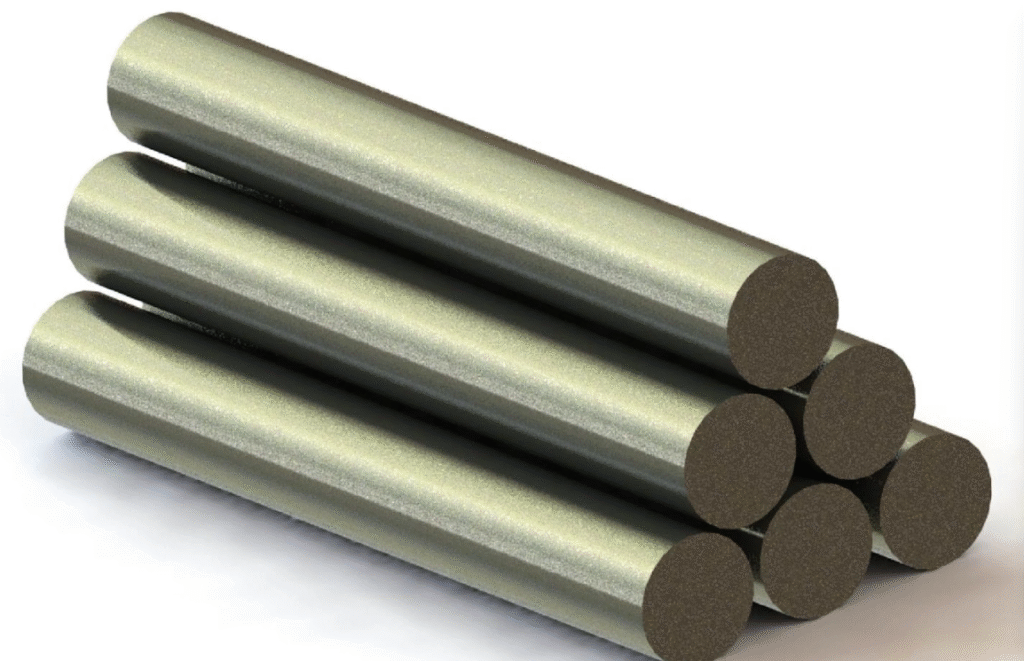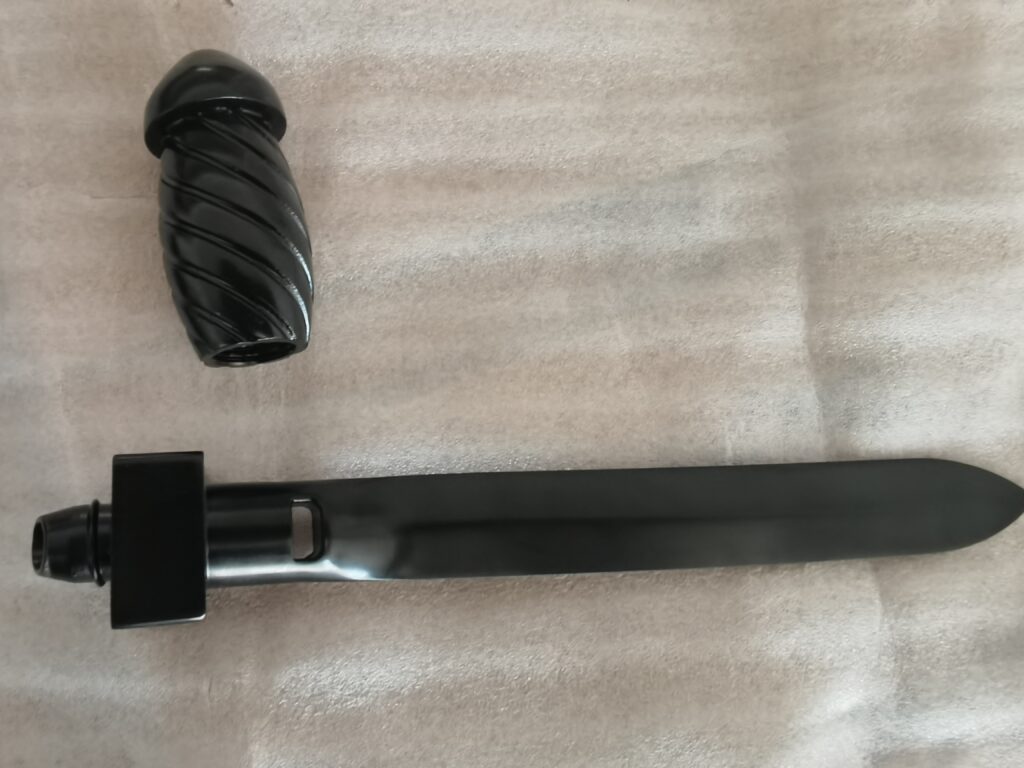Discover tungsten steel alloys with exceptional hardness heat resistance and wear resistance ideal for high-performance cutting tools and industrial uses.
Composition and Production of Tungsten Steel
Tungsten steel is primarily an iron-based alloy enriched with key elements like tungsten, molybdenum, vanadium, and cobalt. Each of these additions plays a vital role in creating the perfect balance between hardness and toughness, which is essential for demanding industrial applications. Tungsten contributes exceptional hardness and heat resistance, molybdenum improves strength and corrosion resistance, vanadium enhances wear resistance, and cobalt adds toughness and stability at high temperatures.
The production of tungsten steel involves melting the raw materials in electric arc furnaces, a process necessary to handle the metal’s extremely high melting points. During melting, ferrotungsten—a master alloy of iron and tungsten—is added to precisely control tungsten content. After melting, the molten metal undergoes sintering and heat treatment to achieve specific SAE 7XXX grade classifications, ensuring consistent quality and performance. These steps also help address common challenges such as brittleness, which can occur with high tungsten concentrations, by carefully managing the alloy structure.
There are two primary forms of tungsten steel: straight grades and custom alloys. Straight grades offer standard compositions suitable for many applications, while custom alloys—such as those developed by Vastpcc—are tailored to meet specific industry requirements. These custom variations adjust the balance of alloying elements to optimize performance in specialized roles like aerospace components or high-speed cutting tools, ensuring that tungsten steel meets a wide range of technical demands.
Key Properties and Advantages Over Traditional Steels
Tungsten steel stands out with its exceptional hardness—second only to diamond in some forms—making it a top choice for wear-resistant metal applications. It offers impressive corrosion resistance and maintains what’s called red hardness, meaning it can hold its strength and cutting edge even at temperatures up to 600°C. This makes tungsten steel ideal for high-speed steel alloy uses where heat buildup is a challenge.
Thermally, tungsten steel boasts a very high melting point and low thermal expansion, so it stays stable even in extreme environments like rocket nozzles or fusion reactors. Chemically, it resists oxidation and corrosion better than many traditional steels, extending tool life and reliability.
One of the main challenges with tungsten steel is its tendency toward brittleness when tungsten content gets too high. That’s where Vastpcc’s advanced alloy optimizations make a difference, carefully balancing tungsten with other elements like molybdenum and vanadium to boost toughness without losing strength. This means you get a heat-resistant alloy that’s built to last under tough industrial conditions without the usual trade-offs.
Applications of Tungsten Steel in Key Industries

Tungsten steel plays a crucial role across several key industries thanks to its unique blend of toughness and heat resistance.
Tooling and Machining
In metalworking, tungsten steel is widely used for high-speed cutting tools, drill bits, milling cutters, and self-sharpening blades. These tools benefit from tungsten steel’s exceptional wear resistance and ability to maintain sharpness under high temperatures, making them ideal for heavy-duty machining and industrial manufacturing.
Aerospace and Defense
The aerospace and defense sectors rely on tungsten steel for components like rocket nozzles, turbine blades, and armor. Its high density and heat resistance make it perfect for parts that face extreme conditions, including high friction, heat, and mechanical stress.
Other Industries
Beyond tooling and aerospace, tungsten steel is popular in mining equipment for durability and wear resistance. It’s also used in creating jewelry, such as durable rings that resist scratching. Additionally, electronics benefit from tungsten steel parts for their precision and stability.
At Vastpcc, we specialize in custom tungsten steel parts tailored for precision applications across these industries, ensuring quality and performance tailored to your needs.
Tungsten Steel vs High-Speed Steel and Tungsten Carbide A Comparative Guide
When comparing tungsten steel to high-speed steel (HSS), tungsten steel stands out for its superior heat and wear resistance. This makes it a top choice for applications where tools face extreme temperatures or heavy use. On the other hand, HSS offers better toughness and is generally more cost-effective, making it suitable for less demanding jobs where tool flexibility matters more.
Looking at tungsten steel versus tungsten carbide, the main difference lies in hardness and brittleness. Tungsten carbide is incredibly hard—harder than tungsten steel—but it’s also more brittle. This means it can crack or chip under heavy impact. Tungsten steel offers more flexibility and toughness, which helps reduce breakage during machining, especially in high-friction or high-stress environments.
Choosing between these materials often comes down to the job specifics. Here’s a quick look at when to pick Vastpcc tungsten steel:
- Use tungsten steel when you need balanced hardness and toughness. It handles heat and wear well without becoming too brittle.
- For high-friction or demanding machining tasks, tungsten steel offers better long-term durability than HSS.
- Pick tungsten carbide only if maximum hardness is essential and the application avoids heavy shocks.
Vastpcc’s tungsten steel is designed to hit that sweet spot, giving you reliable performance across tough industrial conditions without the downsides of brittleness or excessive cost.
Sourcing and Innovations in Tungsten Steel with Vastpcc
Tungsten steel sourcing is tightly linked to global supply trends, with key deposits found right here in the US, especially in California and Nevada. These locations play a crucial role, but sourcing tungsten steel raw materials isn’t without challenges—high melting points and material brittleness make consistent quality a must. That’s where Vastpcc stands out, offering reliable sourcing and strict quality control to ensure every batch meets the demanding standards of American industries.
Looking ahead, Vastpcc is pushing alloy advancements focused on sustainability and efficiency. They’re developing new tungsten steel blends that reduce environmental impact without compromising performance. Plus, Vastpcc leads the way in custom fabrication, tailoring tungsten steel parts for cutting-edge fields like 3D printing, which is becoming a game changer in manufacturing precision components.
To keep tungsten steel tools in top shape, maintaining them properly is key. Here are some tips:
- Sharpen regularly to maintain cutting edge and reduce wear.
- Use proper heat treatment to balance hardness and toughness.
- Store tools in dry environments to prevent corrosion and maintain durability.
- Avoid overheating during use to preserve the tool’s hardness.
With these care practices and Vastpcc’s innovations, tungsten steel tools can deliver exceptional performance and longer service life, meeting the evolving needs of US industries.

